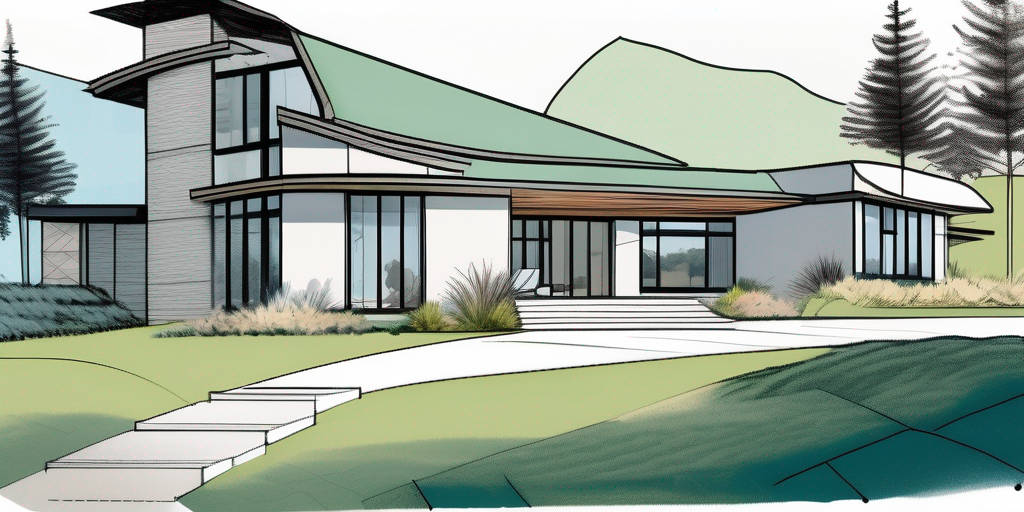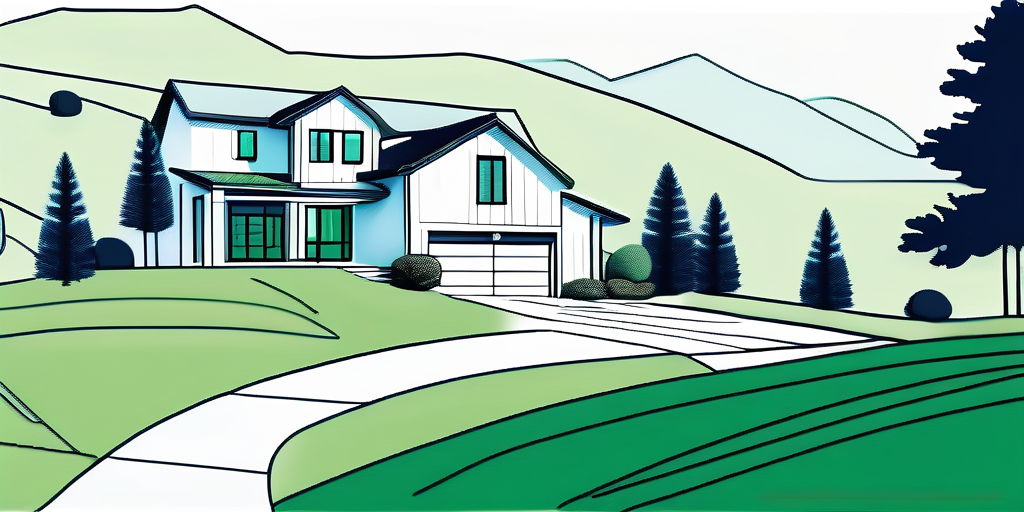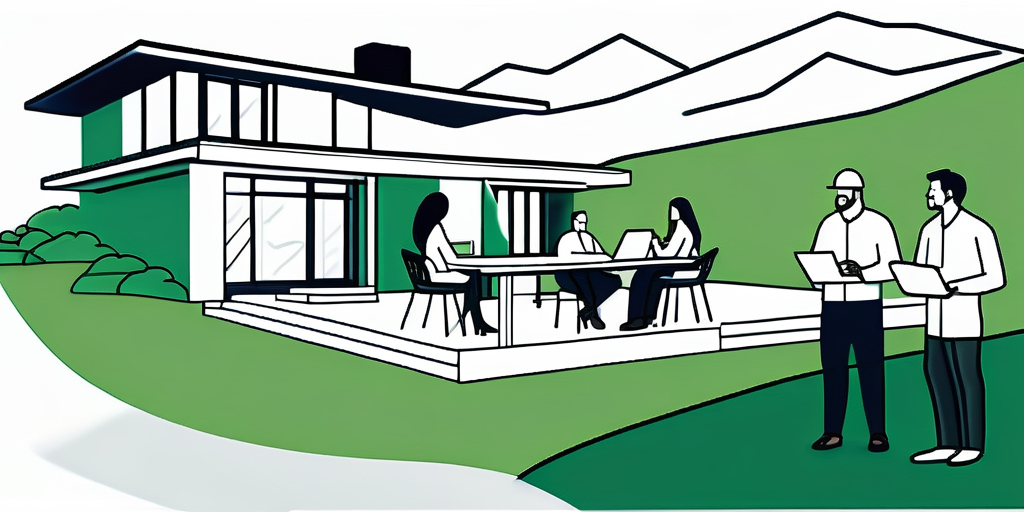
Designing a custom home is much more than just choosing finishes and colors; it’s a collaborative journey that involves multiple stakeholders working together towards a shared vision. In Tennessee National, a community celebrated for its stunning landscapes and luxurious living, the role of collaboration in custom home design takes center stage. This article explores the importance of working together in creating your dream home, navigating the collaborative process, identifying key players, and understanding the benefits and challenges associated with this approach.
Collaboration is at the heart of successful home design. It involves the ongoing engagement of architects, designers, contractors, and homeowners throughout the entire process. This teamwork not only fosters creativity but also ensures that everyone’s visions and preferences are incorporated into the final outcome.

When all parties are actively involved, there is a greater chance of achieving a harmonious balance between functionality, aesthetics, and personal taste. As each player brings their expertise to the table, it helps bridge the gap between creative aspirations and practical realities.
In the realm of home design, collaboration can take on many forms. It encompasses brainstorming ideas during initial discussions, making joint decisions throughout the design phases, and refining concepts together. It is a holistic approach where the input of each participant is valued, leading to richer design solutions.
Moreover, collaboration thrives on communication. Regular check-ins, feedback loops, and discussions are vital elements that keep everyone aligned and engaged in the process. These interactions not only clarify expectations but also create an environment where innovative ideas can flourish. For instance, during a design meeting, a homeowner might suggest a unique layout that the architect hadn’t considered, leading to a more functional and aesthetically pleasing design.
Collaboration is vital in custom home design for several reasons. First, it fosters creativity and innovation. When diverse perspectives come together, it sparks new ideas that might not emerge in isolation.
Second, collaboration builds trust among stakeholders. Homeowners who feel involved in the process are more likely to be satisfied with the final product. A transparent design journey helps manage expectations and reduces conflicts that can arise from misunderstandings. This trust is further solidified when all parties are encouraged to voice their opinions and concerns, creating a safe space for open dialogue.
Lastly, cooperative efforts often lead to more efficient use of resources. When working as a team, it becomes easier to identify potential issues early, thereby saving time and minimizing costs associated with rework or changes later in the process. For example, a contractor might spot a structural limitation during the design phase that could impact the homeowner's vision, allowing for timely adjustments that prevent costly alterations down the line. This proactive approach not only streamlines the project but also enhances the overall quality of the final design, ensuring that the home is not only beautiful but also built to last.
The collaborative process is dynamic and unfolds in stages. At Tennessee National, it is structured yet adaptable, ensuring that both homeowners and professionals can share their visions while working towards a beautiful outcome.

The journey begins with an initial consultation where homeowners meet with architects and designers. This phase is crucial for establishing a mutual understanding of the expectations, preferences, and lifestyle needs of the homeowner.
During this stage, discussions revolve around the desired style, functionality, and any specific requirements. It’s a chance to share inspirations, such as design styles or elements that resonate with the homeowners. This collaborative brainstorming sets the tone for the entire project, ensuring a clear foundation for the design work that follows. Homeowners are encouraged to bring along images, sketches, or even articles that capture their vision, allowing the design team to grasp the nuances of their dream home. This exchange of ideas not only fosters creativity but also builds a rapport that is essential for the collaborative journey ahead.
Once the concepts are in place, the collaborative endeavor continues with design development. This involves turning initial ideas into detailed plans, often requiring additional meetings and adjustments. Feedback from the homeowners is critical, and designers will guide them through choices regarding materials, layouts, and technologies.
As the design evolves, each phase undergoes rigorous review and refinement. It is essential to communicate openly to address any concerns and incorporate feedback. This iterative approach leads to a finalized design that reflects both the aesthetic desires and practical needs of the homeowners. Throughout this phase, homeowners may also explore sustainable building practices and energy-efficient technologies, which are increasingly important in modern home design. By integrating these elements, they not only enhance the functionality of their home but also contribute positively to the environment. The design team remains flexible, ready to adapt to new ideas or changes in direction, ensuring that the final blueprint is a true reflection of the homeowners' aspirations and lifestyle. Each decision made during this stage is a building block toward the realization of a unique and personalized living space.
Several key players contribute to the collaborative home design process, each bringing their unique skills and perspectives to the table. At Tennessee National, these roles are well-defined, allowing for seamless collaboration.

Architects and designers are the visionaries, translating the homeowner's dreams into concrete, actionable plans. They offer insights into design trends, structural integrity, and functionality, ensuring that every aspect of the home is meticulously considered.
Their expertise allows for creative problem-solving, especially when it comes to challenges such as maximizing space or enhancing natural light. As collaborative partners, they listen to homeowners' ideas while providing suggestions that elevate the overall design. Furthermore, architects often stay updated on sustainable practices and materials, which can lead to eco-friendly solutions that benefit both the environment and the homeowner's long-term energy costs. This knowledge not only enriches the design process but also aligns with the growing demand for environmentally responsible living.
Homeowners play a pivotal role in the collaborative design process. They are the heart of the project, providing input, inspiration, and feedback. It is their vision and lifestyle that guide the decisions made throughout the design journey.
Being actively engaged encourages homeowners to voice their thoughts, which not only enhances their satisfaction with the project but also allows for a more personalized outcome. Their participation in meetings and feedback sessions keeps the design aligned with their aspirations. Additionally, homeowners often bring their own experiences and preferences into the mix, which can lead to innovative ideas that might not have been considered otherwise. This exchange of ideas fosters a sense of ownership and pride in the final product, making the home not just a structure, but a true reflection of the family that inhabits it. The emotional investment that homeowners contribute can significantly influence the design's success and resonance with their lifestyle needs.
Embracing a collaborative approach offers numerous advantages that significantly enhance the home design experience. The synergy between team members leads to better outcomes for everyone involved.
One of the most significant benefits of collaboration is the ability to achieve a home that is genuinely one-of-a-kind. Through the combined efforts of architects, designers, and homeowners, the finished design reflects the individual tastes and lifestyles of those who will inhabit the space.
This personalized touch not only makes a house feel like a home but also enhances its value and appeal. A collaborative approach ensures that unique elements are thoughtfully incorporated, creating a space that resonates deeply with its occupants. For instance, homeowners can share their stories, cultural backgrounds, and preferences, which can inspire features such as custom cabinetry, unique color palettes, or even specialized spaces like a home office or a cozy reading nook. These personal touches transform a generic design into a narrative that tells the story of its inhabitants.
Collaboration also promotes efficiency and cost-effectiveness. A well-coordinated team is more capable of identifying potential obstacles early in the design process, minimizing the risk of costly revisions or delays. When everyone works together, it streamlines decision-making, making the process smoother overall.
This trust and open communication prevent misunderstandings that can lead to disputes or project overruns. By utilizing each team member's expertise, the result is often a more efficient construction process that ultimately saves time and money. Moreover, collaborative efforts can lead to innovative solutions that might not have been considered in a more traditional, siloed approach. For example, integrating sustainable practices and materials can be more easily achieved when architects, builders, and homeowners work together, ensuring that eco-friendly choices are both practical and aesthetically pleasing. This not only results in a cost-effective build but also contributes to a healthier environment, making the home a sanctuary for its residents while being mindful of the planet's resources.
While collaboration in home design is rich with benefits, it isn’t without its challenges. However, recognizing and addressing these challenges can lead to a stronger, more successful partnership.
Each participant may have different design preferences or inspirations, which can lead to conflicts. The key to overcoming this challenge lies in fostering open dialogue. Creating an environment where everyone feels heard can help to find a compromise that aligns visions without dismissing individual desires.
Additionally, utilizing mood boards or design mockups can assist in visualizing concepts and preferences, guiding discussions towards a unified direction. This visual representation not only helps clarify ideas but also sparks creativity, allowing participants to explore various styles and elements that may not have been initially considered. Encouraging each participant to present their inspirations can lead to a richer design palette and a more inclusive approach, ultimately resulting in a space that resonates with everyone involved.
Time and budget constraints can prove formidable in the collaborative design process. To navigate these hurdles, it’s essential to have transparent conversations from the very beginning. Establishing realistic timelines and budgets helps all parties remain on the same page.
Incorporating flexibility into the design process can also mitigate potential constraints. By setting priorities and being open to creative solutions, collaborations can thrive even within limits, ensuring that the finished product is still outstanding. Regular check-ins and progress updates can further enhance accountability and keep the project on track. Additionally, exploring alternative materials or design techniques can provide cost-effective solutions without compromising the overall vision, allowing for a balance between aesthetics and practicality.
Moreover, leveraging technology can streamline the collaborative process. Utilizing project management tools and design software can help keep everyone organized and informed, making it easier to track changes and updates in real-time. This not only enhances communication but also fosters a sense of teamwork, as all participants can actively engage in the evolution of the design, ensuring that everyone’s voice is represented throughout the journey.